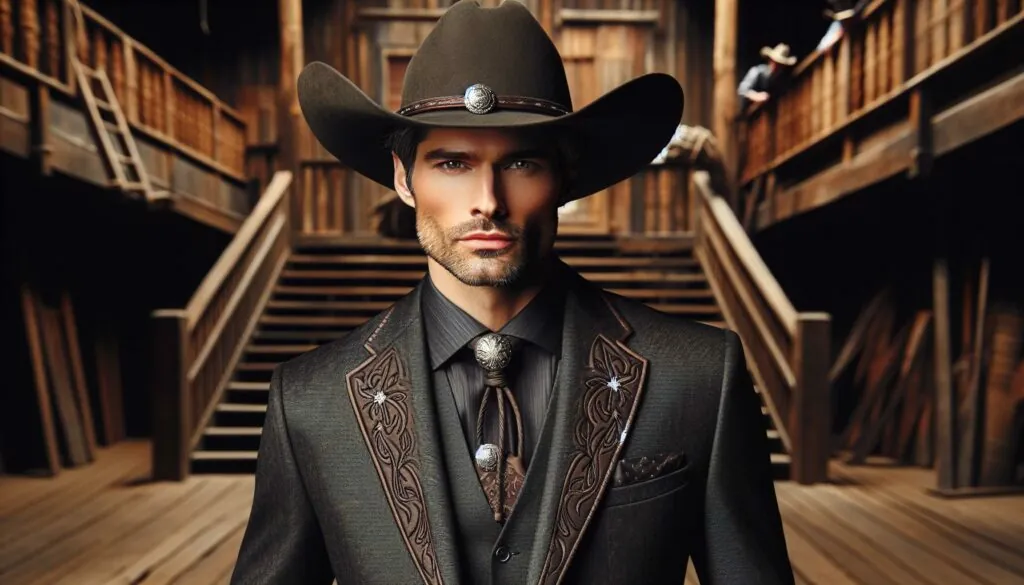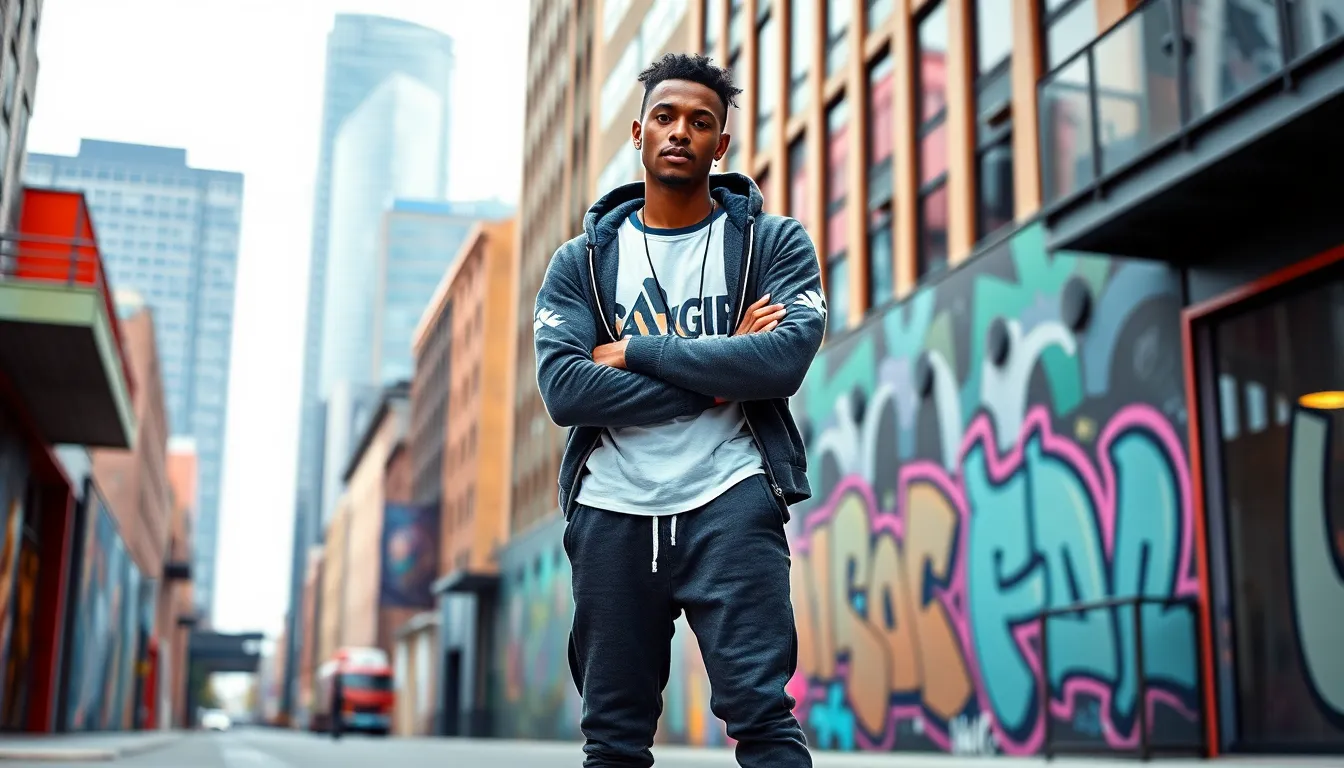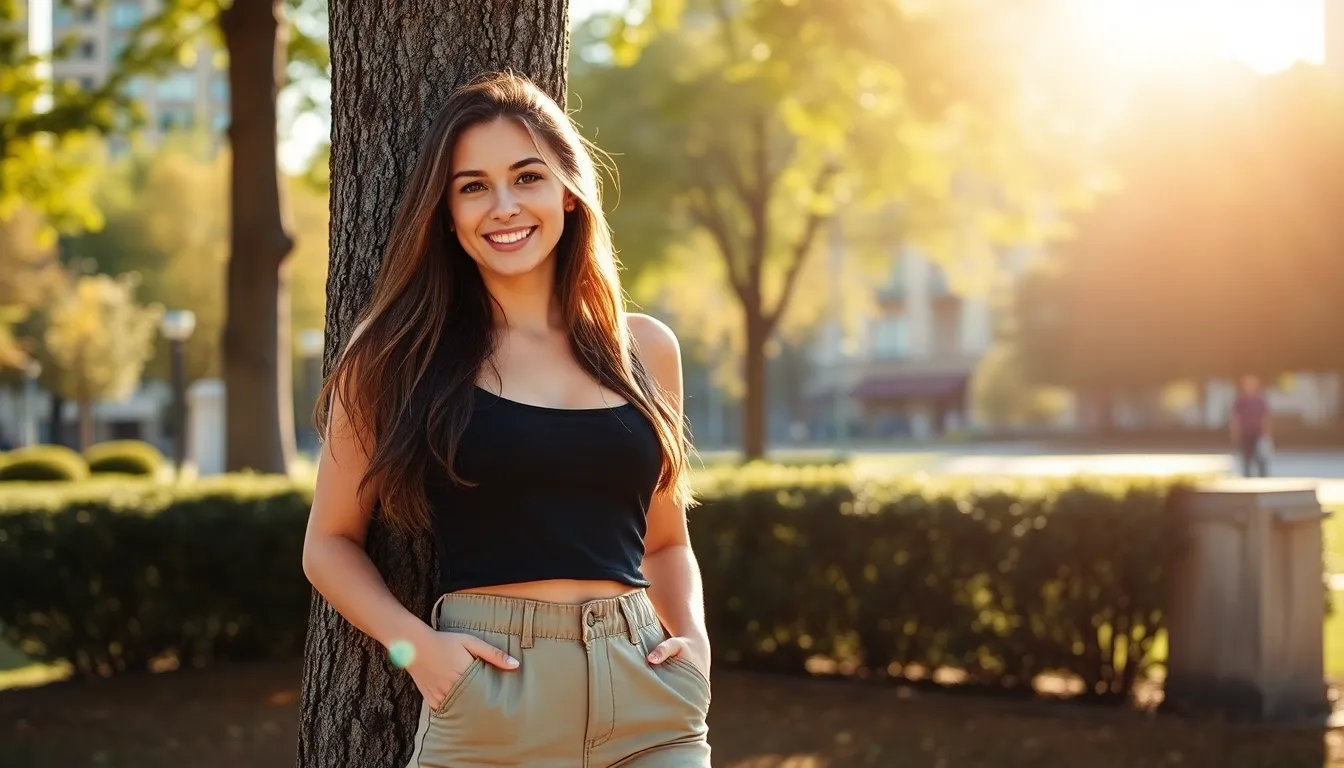Table of Contents
ToggleAs someone who’s spent years exploring men’s fashion I can confidently say that formal Western wear combines classic cowboy style with sophisticated elegance. From ranch weddings to upscale events Western formal attire lets men showcase their rugged charm while maintaining a polished appearance.
I’ve discovered that mastering formal Western wear isn’t just about throwing on a cowboy hat and boots. It’s an art that blends traditional Western elements with modern formal aesthetics. Whether you’re considering a bolo tie with a crisp dress shirt or a tailored Western suit with intricate embroidery the key lies in balancing authenticity with refinement.
Key Takeaways
- Formal Western wear combines traditional cowboy elements with sophisticated tailoring, featuring distinctive details like pearl snap buttons, embroidered yokes, and decorative stitching
- Essential components include Western dress shirts, bolo ties, formal boots in exotic leathers, and sterling silver accessories, all working together to create an authentic yet refined appearance
- Western suits differ from conventional suits with longer jacket lengths (32″ vs 29″), pointed lapels, and unique features like yoke detailing and contrast stitching
- Modern Western formal wear trends embrace slimmer fits, minimalist designs, and performance fabric blends while maintaining traditional Western elements
- Special occasion Western wear, particularly for weddings and black-tie events, requires premium materials and elevated details like hand-stitched embroidery and formal accessories
- Proper care and maintenance, including specific storage methods and regular cleaning routines, are crucial for preserving Western formal wear’s quality and appearance
Understanding Formal Western Wear for Men
Formal Western wear combines traditional cowboy elements with sophisticated tailoring techniques. This distinct style creates a refined appearance while maintaining authentic Western heritage details.
Classic Western Suits and Sport Coats
Western suits feature distinctive elements that set them apart from conventional formal attire. The jackets incorporate longer lengths with defined shoulders plus decorated yokes across the back. Common embellishments include:
- Piped edges along lapels pockets
- Pearl snap buttons on cuffs sleeves
- Contrast stitching in arrow or rope patterns
- Leather or suede elbow patches
- Side vents with decorative stitching
| Western Suit Features | Traditional Suit Features |
|---|---|
| 32-inch jacket length | 29-inch jacket length |
| Pointed lapels | Straight lapels |
| Snap buttons | Standard buttons |
| Yoke detailing | Plain back |
Traditional Western Tuxedos
Western tuxedos elevate formal wear with intricate details crafted specifically for black-tie events. Key characteristics include:
- Satin-faced lapels with Western tooling patterns
- Hand-tooled leather buttons or ornate metal clasps
- Embroidered vest panels featuring Western motifs
- Matching bolo tie with sterling silver tips
- Pressed dress pants with subtle leg tapering
- Fine wool gabardine
- Silk-blend materials
- Micro-suede accents
- Premium cotton sateen
- Worsted wool with subtle sheen
Essential Components of Western Formal Attire
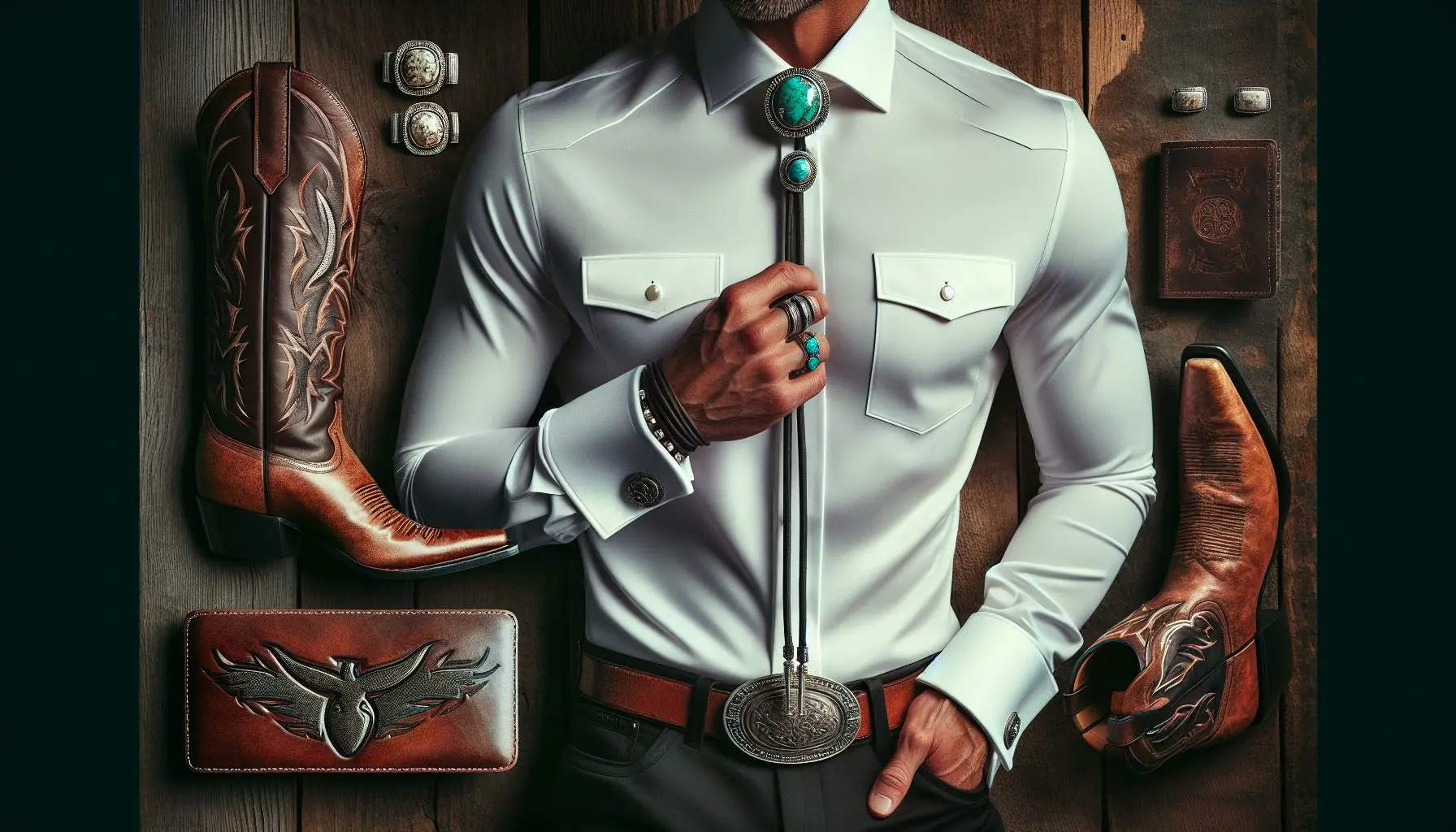
Formal Western attire incorporates specific elements that create a distinctive blend of cowboy heritage with refined elegance. These components work together to establish an authentic Western formal look while maintaining sophistication.
Western Dress Shirts and Ties
Western dress shirts feature signature details like pearl snap buttons, embroidered yokes with arrow points at corners and contrast piping along seams. The shirts come in crisp cotton fabrics with spread collars tailored to accommodate bolo ties or silk scarves. For formal events, classic white shirts with intricate embroidery on the front placket pair perfectly with handcrafted bolo ties featuring sterling silver slides, turquoise stones or tooled leather accents.
Formal Western Boots
Formal Western boots elevate traditional cowboy footwear with premium materials and refined details. These boots incorporate exotic leathers like alligator, ostrich or lizard with decorative stitching patterns. The toe shapes range from traditional pointed to rounded square profiles while heel heights stay moderate at 1.5-2 inches. Top boot makers add hand-tooled designs, sterling silver toe tips and sophisticated finishes in black, cognac or rich brown tones.
- Sterling silver collar tips with turquoise or onyx inlays
- Hand-tooled leather wallets with decorative corners
- Western cuff links featuring horseshoe or longhorn motifs
- Silk pocket squares with Western-inspired patterns
- Statement rings incorporating native stones or precious metals
| Accessory Type | Formal Materials | Traditional Details |
|---|---|---|
| Belt Buckles | Sterling Silver, Gold | Hand-engraving, Precious stones |
| Boots | Exotic leather, Calfskin | Silver tips, Custom stitching |
| Ties | Hand-braided leather, Silk | Sterling slides, Natural stones |
Choosing the Right Western Cut and Style
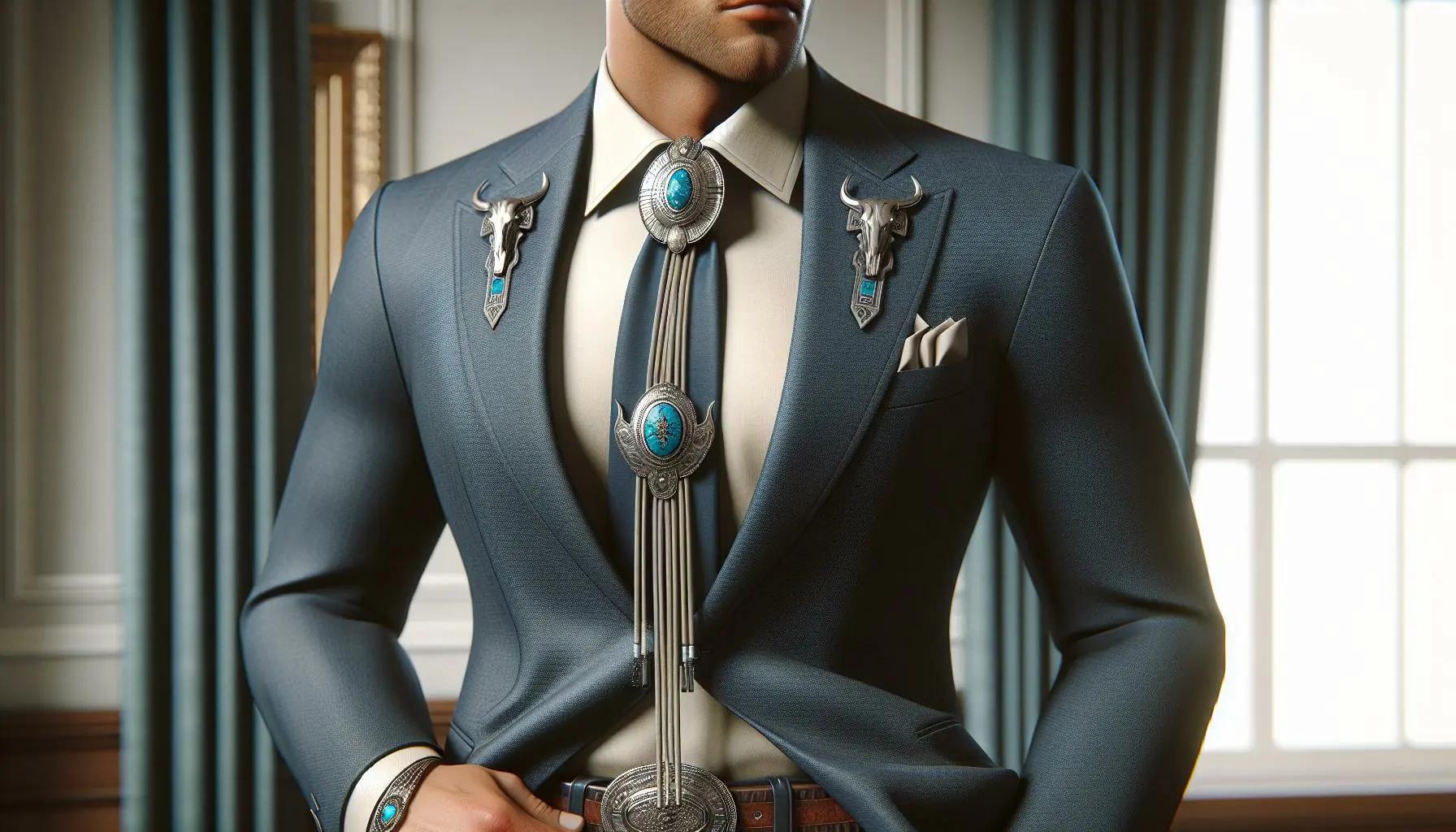
Western formal wear accommodates different body types through strategic cuts that enhance natural proportions. The right combination of fit, style elements and color creates a polished Western formal look.
Body Type Considerations
I recommend selecting Western suits based on specific body proportions for optimal fit. Taller men benefit from longer jacket lengths with defined shoulders that create balance. Athletic builds look refined in fitted Western suits with tapered waists highlighting broad shoulders. Shorter men achieve a lengthening effect with vertical design elements like piping or contrast stitching. Fuller figures appear sleek in single-breasted jackets with subtle Western details.
Color Coordination Tips
Traditional Western formal wear colors follow specific pairing guidelines for maximum impact:
| Primary Color | Complementary Elements | Best Occasions |
|---|---|---|
| Black | Silver accents, white shirt | Evening events |
| Navy | Tan boots, cream shirt | Business formal |
| Brown | Turquoise accessories | Daytime formal |
| Charcoal | Bronze details, ivory shirt | Versatile formal |
- Bolo ties with turquoise or coral stones
- Belt buckles in silver or copper finishes
- Boot colors matching or darker than the suit
- Pocket squares in coordinating Western prints
- Vest panels with tonal embroidery
Modern Takes on Western Formal Fashion

Contemporary Western formal fashion blends traditional cowboy aesthetics with current menswear innovations. This fusion creates distinctive looks that honor Western heritage while embracing modern style sensibilities.
Contemporary Western Suit Trends
Modern Western suits feature slim-fit silhouettes paired with subtle Western details. Notable trends include:
- Tailored fits with Western-inspired shoulder construction
- Minimalist yoke designs on jackets rather than elaborate embroidery
- Performance fabric blends combining wool with stretch materials
- Monochromatic color schemes in charcoal grays dark navies
- Refined boot cuts on trousers with minimal flare
- Single-breasted jackets with understated Western pocket styling
- Pairing traditional bolo ties with slim-cut European-style shirts
- Combining classic Western boots with tailored modern suits
- Using subtle Western stitching on modern suit lapels
- Incorporating tech-fabric Western vests under traditional suit jackets
- Adding hand-tooled leather accessories to minimalist outfits
- Mixing modern metallic finishes with traditional silver accents
| Modern Western Suit Features | Traditional Elements | Contemporary Updates |
|---|---|---|
| Jacket Length | 30-32 inches | 28-29 inches |
| Shoulder Style | Padded square | Natural slope |
| Fabric Weight | 12-14 oz | 8-10 oz |
| Button Stance | Low 3-button | High 2-button |
| Pocket Design | Fancy flaps | Clean welts |
Special Occasion Western Wear
Special occasion Western wear combines traditional cowboy elements with formal dress codes to create distinctive outfits for significant events. These ensembles elevate classic Western style through premium materials refined details.
Wedding Attire
Western wedding attire features tailored frock coats in light colors like pearl gray silver sage or ivory. The groom’s ensemble includes:
- Hand-stitched yokes with ornate embroidery patterns matching wedding colors
- Premium wool gabardine suits with satin-lined vests displaying Western motifs
- Custom-fitted dress shirts featuring mother-of-pearl snap buttons
- Hand-tooled leather boots in coordinating neutral tones
- Sterling silver bolo ties adorned with turquoise or precious stones
Key accessories include:
- Commemorative belt buckles with wedding dates or initials
- White felt or straw Stetson hats for spring/summer ceremonies
- Matching groomsmen vests with scaled-down embellishments
- Hand-carved leather wallets or money clips as wedding party gifts
Black-Tie Events
Black-tie Western formal wear integrates traditional tuxedo elements with sophisticated cowboy style:
Core components:
- Black wool tuxedo jackets with satin-faced lapels piped edges
- Tailored black trousers with refined Western pocket details
- Black silk vests featuring subtle Western embroidery
- White pique formal shirts with Western bibs studs
- Classic black leather boots with decorative toe stitching
- Sterling silver collar tips with onyx inlays
- Black silk string ties or formal bolo ties
- Monogrammed silver cufflinks with Western motifs
- Black felt dress hats with matching silk bands
- Hand-tooled leather dress belts with silver buckles
Care and Maintenance Tips
Proper care extends the life of Western formal wear while preserving its distinctive appearance. Strategic maintenance routines protect the investment in premium materials like wool gabardine suits handcrafted leather accessories.
Proper Storage Methods
Quality hangers form the foundation of Western formal wear storage:
- Cedar suit hangers support jacket shoulders properly with contoured shapes
- Boot trees maintain boot shaft shape between wearings
- Acid-free garment bags protect suits from dust exposure
- Climate-controlled closets prevent moisture damage at 45-50% humidity
- Hat boxes preserve Stetson crown shapes during storage periods
- Leather conditioner applications every 90 days prevent cracking
- Silica gel packets absorb excess moisture in boot storage areas
- Dry clean Western suits after 4-5 wearings
- Spot clean pearl snap buttons with jewelry cleaner
- Polish exotic leather boots monthly with matching cream polish
- Steam clean wool blend garments at low temperatures
- Remove belt buckles before cleaning leather belts
- Hand wash bolo ties with mild soap solution
- Brush suede items with specialized brushes weekly
- Test cleaners on hidden areas before full application
| Item Type | Cleaning Frequency | Method |
|---|---|---|
| Wool Suits | Every 4-5 wears | Dry clean |
| Leather Boots | Monthly | Polish/Condition |
| Dress Shirts | After each wear | Machine wash |
| Bolo Ties | As needed | Hand wash |
| Hat Care | Every 3 months | Professional cleaning |
I’ve shared my expertise on men’s formal Western wear and it’s clear that this iconic style continues to evolve while honoring its rich heritage. The perfect blend of cowboy authenticity and modern refinement creates a distinctive look that stands out at any formal occasion.
Whether you’re attending a black-tie event or planning your wedding attire the key is finding the right balance between traditional Western elements and contemporary sophistication. With proper care and attention to detail these timeless pieces will serve you well for years to come.
Remember that true Western formal style isn’t just about wearing the right pieces – it’s about carrying forward a legacy of American fashion with confidence and pride.

